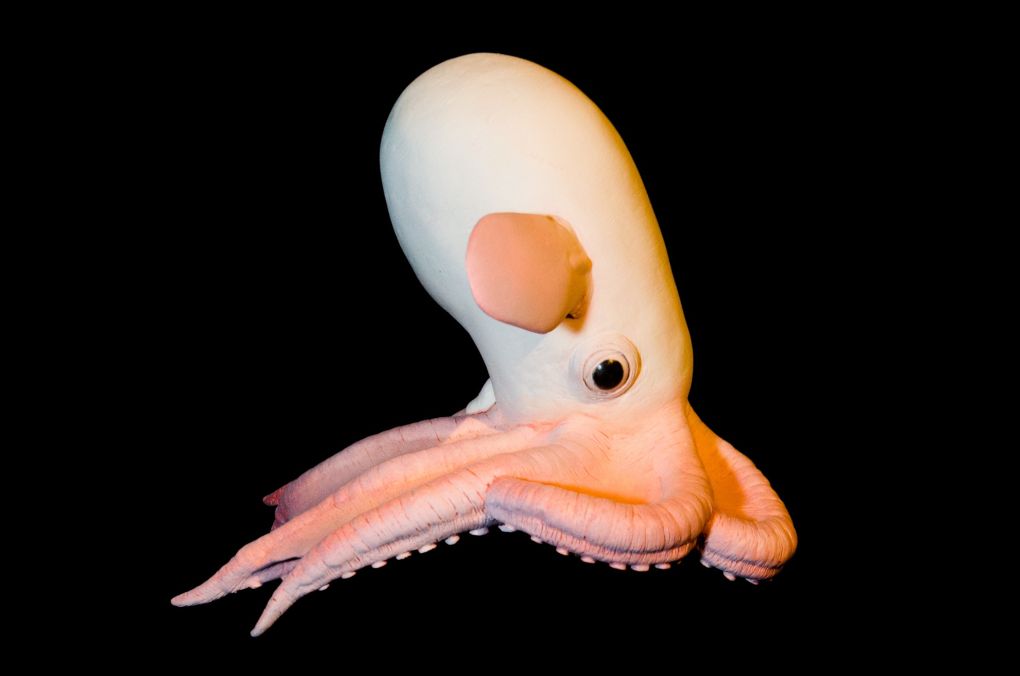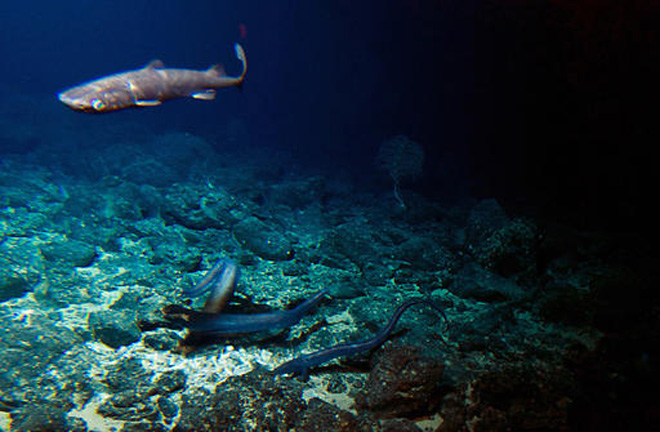Underwater Volcanoes - An Oasis in the Deep Sea World

Submersible Pisces V (source: Wikipedia)
Deep-water volcanoes have long been interested in geologists. The study of these objects allows us to understand the features of the geological structure of the region, as well as to get an idea of the mineralogical composition of rocks. Biologists are also interested in volcanoes. Or rather, not by themselves, but by the species of animals and plants that live nearby. Often, scientists make very interesting discoveries.
A recent expedition of three scientists on a submarine to the 4000-meter-high underwater sleeping volcano, located near the Hawaiian Islands, confirms the above. This volcano, which has not been active for thousands of years, is called Mount Cook. Scientists have brought grief the first in the entire history of science visit using the manned submersible Pisces V.
Mount Cook is located 160 km southwest of the Big Island of Hawaii. It is part of a group of underwater volcanoes, known as the geologic seamounts. These mountains are almost 80 million years old.
')
The expedition is one of the first in the project of the study of underwater volcanoes. The project was initiated by the non-profit organization Conservation International and the University of Hawaii. Scientists plan to explore about 50 volcanoes located near the Hawaiian Islands.
“We know practically nothing about the bottom of the ocean in this place,” says Peter Seligmann, co-founder of Conservation International. “All that we know is that each underwater volcano has its own ecosystem with species unknown to science of living organisms. We do not know what these organisms are. We do not know what they can tell us. ”
In order to study the ecosystems of such regions, the first expedition to Mount Cook was undertaken. “We have no idea what we can detect. Diving into the depths of the ocean always throws up surprises, ”said Greg Stone, a marine biologist who was part of the Pisces V submarine team during the first expedition. And I must say, he looked like in the water - in the literal and figurative sense.
Next to the mountain, scientists saw the octopus Grimpotevtis with large growths that make the puntus look like a baby elephant.

Octopus species Grimpoteutis (source: captjillsjourneys.wordpress.com)
A new species of coral was also found, called the Purple Haze. As scientists have suspected, life is in full swing on the mountain and next to it. In addition to octopus and corals, experts have recorded the presence of a multitude of bottom dwellers - these are starfish, eels with sharks, shrimps, crabs and octopuses of other species. Sunlight to the depths where scientists plunged, does not penetrate. All living beings found, as it turned out, can do for a long time (or in general their whole life) without sunlight. The abundance of living organisms is explained here by the fact that the sleeping volcano still shows little activity. Below, from the depths of the earth's crust, hot water flows rise, which bring a large number of chemicals and compounds that serve as food for a number of microscopic creatures. Their populations live and live for thousands of years, giving food to larger and more complex organisms.

Coral "Purple Haze" (source: Caleb Jones)
“My task today is to study the creatures that live on the mountain and at its foot, to understand what supports their lives, what is the role of currents in this area,” said Stone before the start of the expedition. According to scientists, all the goals were met. Using the manipulators of the underwater vehicle, the expedition members sampled genetic material from a number of species of sponges, corals, and other organisms. Now these samples are analyzed in the laboratory.
For three days of the expedition, scientists studied two other underwater volcanoes. This is the Mac Call, home to a large number of deep-sea sharks and Loihi , an active underwater volcano. Loihi (gav. Lōʻihi) is located 35 kilometers south-east of the island of Hawaii, on the slope of Mauna Loa, the largest shield volcano on Earth. Its top is located 980 meters from the surface of the ocean. Loihi is the youngest volcano in the Hawaiian Ridge. Unlike most active volcanoes in the Pacific, it is not part of the Pacific volcanic ring of fire, and together with other volcanoes of the Hawaiian Ridge is a classic example of a hot spot.

Next to this volcano, life is also in full swing: a 2 meter eel and an even larger shark were immediately discovered when diving.
Underwater mountains are called active or dormant volcanoes that do not reach the surface. Geologists claim that seamounts cover an area of about 46 million km 2 . Ecosystems in such places are very developed, but scientists know little about them. The problem, mainly, is that studying living organisms at depths of thousands of meters is not an easy task. In addition, if specialists identify any representatives of the flora or fauna of the deep-sea regions, then finding out how they are related to each other is very difficult. No less difficult task is to study the life cycle of deep-sea organisms.

Photo of deep sea fish (source: East News / Photo Researchers / Dante Fenolio)
Despite the fact that the representatives of mankind (Swiss researcher Jacques Picard and the US Navy lieutenant Don Walsh) plunged into the deepest point of the World Ocean in 1960, the situation with the underwater mountain ecosystems is not good.
Source: https://habr.com/ru/post/397755/
All Articles